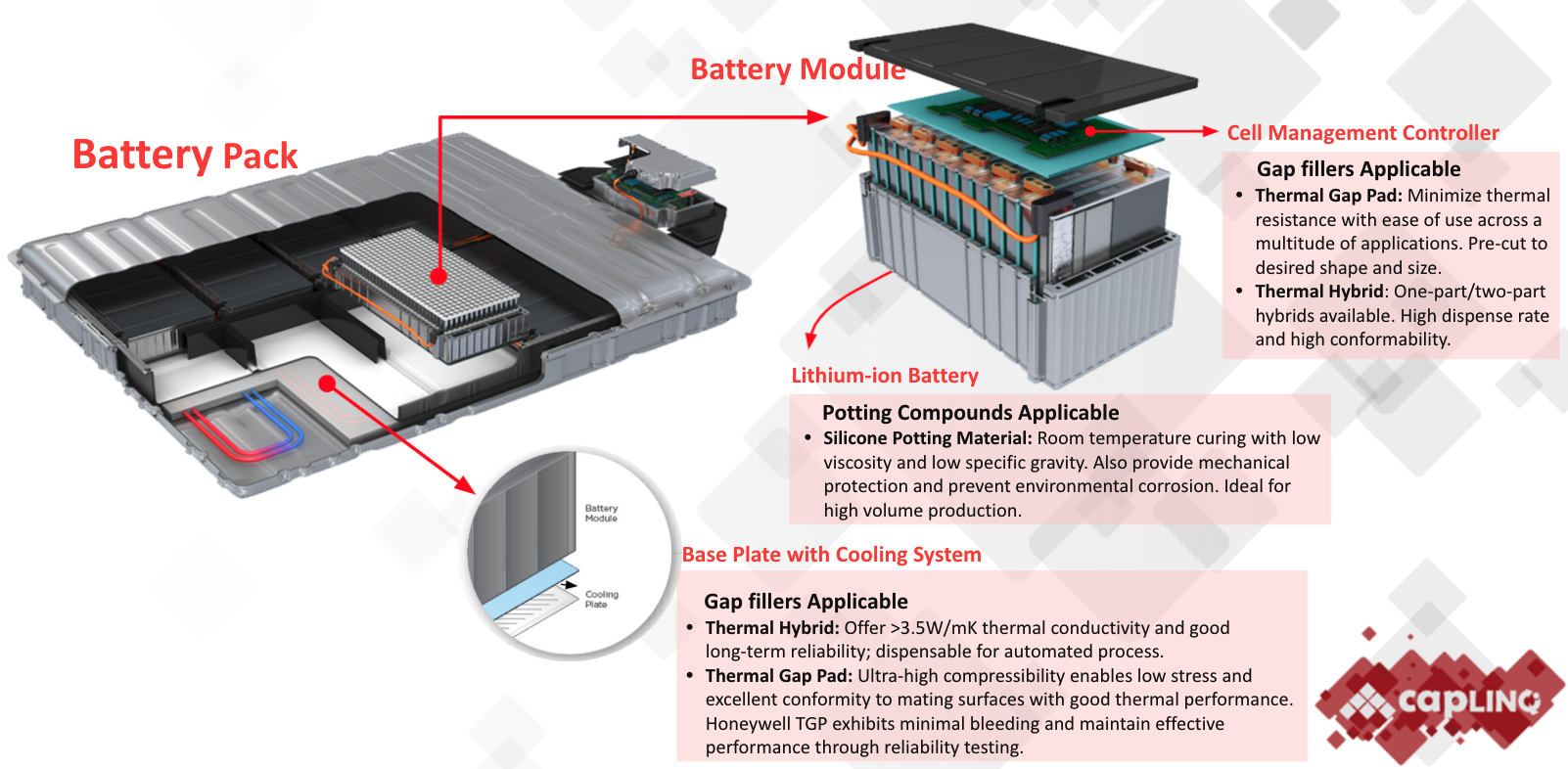EV Batteries
Electric vehicle (EV) batteries are essential components of modern electric vehicles, providing the power needed to propel the vehicle and operate its electrical systems. EV batteries consist of a number of individual battery cells, each containing an electrolyte and two electrodes (an anode and a cathode).
The most common materials used in EV batteries today are lithium-ion (Li-ion) chemistries. Li-ion batteries offer high energy density, long cycle life, and good power output, making them ideal for use in electric vehicles. Li-ion batteries are made using a variety of materials, including lithium cobalt oxide (LCO), lithium nickel cobalt aluminum oxide (NCA), and lithium iron phosphate (LFP). Each of these materials offers different trade-offs in terms of performance, cost, and safety.
Other materials used in EV batteries include copper, aluminum, and graphite, which are used in the battery electrodes and other components. Battery casings and other structural components may be made from a variety of materials, including plastics, metals, and composites.
The production of EV batteries requires a variety of raw materials, including lithium, cobalt, nickel, manganese, and graphite. These materials are typically mined from the earth and processed to extract the desired elements. The mining and processing of these materials can have environmental and social impacts, and there is growing concern about the sustainability of the EV battery supply chain.
Efforts are underway to develop more sustainable and environmentally friendly materials and processes for EV batteries. These include recycling of battery materials, use of more abundant and less environmentally damaging materials, and development of more efficient and sustainable manufacturing processes.
Application considerations
In electric and hybrid vehicles, the key enabling component is the battery pack, which stores electricity in the form of a chemical reaction and converts the reaction back to electricity. Multiple battery cells constitute a module, and multiple modules constitute a pack. Higher power density and lower cost lithium battery systems have transformed the way that we can store and use power on board a vehicle.
Lithium-ion (Li-ion) battery packs remain the major power source for the EV industry. However, these batteries have relatively short operating lives and degrade quickly with age, especially in the challenging automotive environments. This is because an EV needs to be recharged more often than a gasoline vehicle. Each recharge cycle reduces the overall capacitance of the battery, shortening the battery lifespan. Additionally, recharging causes a slight expansion of the physical dimensions of the battery cells, which can cause delamination of the internal battery cells and components or even battery pack deformation. This can prevent effective thermal management, further endangering the battery lifespan, and in worse case scenarios leading to thermal runaway.
To become more competitive over conventional fuel automobiles, electric vehicle (EV) battery technology mainly focuses on making breakthrough on:
- Higher power density and energy density
- High-volume, cost-efficient manufacturing
- Safety and long-term reliability
Thermal management in EVs, ensuring batteries do not overheat, is a critical focus for vehicle safety and lifetime battery performance. Honeywell thermal interface materials could make thermal management more efficient to face the significant thermal challenge of higher power large format Li-ion batteries . A wide range choice of liquid and pad-based materials provides optimized thermal control in formulations to meet high-volume and automation manufacturing process. Honeywell always focuses on the long-term reliability of TIMs and has achieved excellent results.





